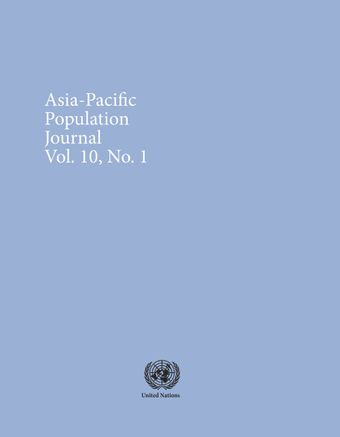-
The influence of socio-biological factors on perinatal mortality in a rural area of Bangladesh
- Source: Asia-Pacific Population Journal, Volume 10, Issue 1, Jan 1995, p. 1 - 6
-
- 18 Jan 1995
- Previous Article
- Table of Contents
- Next Article
Abstract
Reduction of perinatal mortality in developing countries is highly dependent on the management of pregnancy and delivery. The identification of important risk factors could help to direct attention to mothers who need special care, thereby leading to a more efficient health programme to improve their survival. Several previous studies (James, 1968; Saksena, 1980; Zimmer, 1984; Bakketeig and Hoffman, 1979; Misra and others, 1973; Forbes, 1985; Serour, 1981; Stanley, 1981; and Fortney, 1982) of perinatal mortality that have been carried out in different countries suffer from a number of difficulties. Most of the studies have been limited to univariate or bivariate analysis and thus have provided little scope for assessing the net effect of a particular risk factor on perinatal mortality when the effects of other factors are taken into account. Those studies that utilized multivariate techniques considered only a few of the possible risk factors. The studies suggest, however, that survival of the perinatal period is influenced by a number of characteristics of the woman and her reproductive history. Infants born to women in the mid-range of the reproductive years were found to have better perinatal survival chances than those of either younger or older mothers (Srivastava and others, 1969; Misra and others, 1973; Saksena, 1980; Forbes, 1985; Bakketeig, 1979; Stanley and others, 1983; Kiely and others, 1986). In contrast, Baird (1962) found that age did not influence perinatal mortality after controlling for social class in a developed country. Other studies have found that survival chances improved with socio-economic status as measured by such indicators as parental education and parental occupation (Saksena and others, 1980; Forbes and others, 1985; Stanley, 1980; Erhardt and others, 1973; Ross, 1964; Serour and others, 1981; Adelstein and others, 1980). Nulliparity also has been found to increase risk significantly (Kiely and others, 1986) as has both short (e.g. less than two years) and long (more than five years) intervals between pregnancy outcomes (Fedrick and others, 1973; Zimmer, 1979). Similarly previous fetal wastage has been strongly associated with perinatal mortality.





